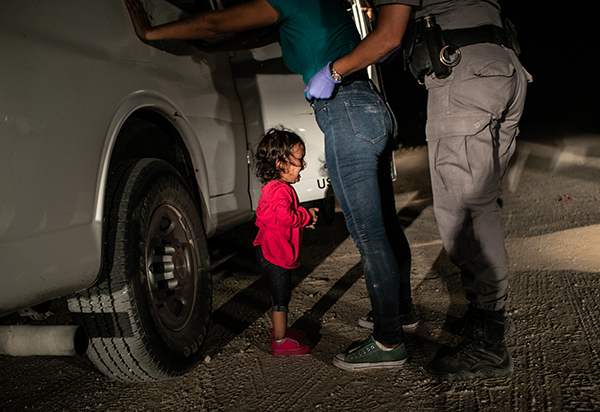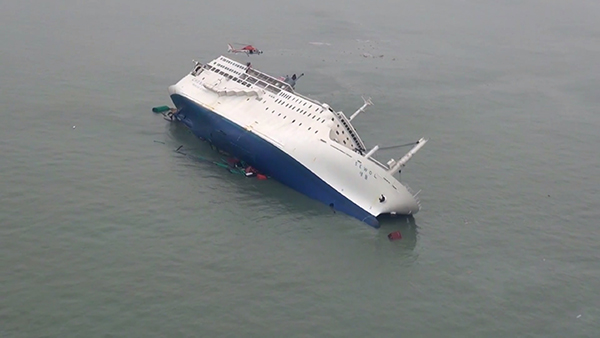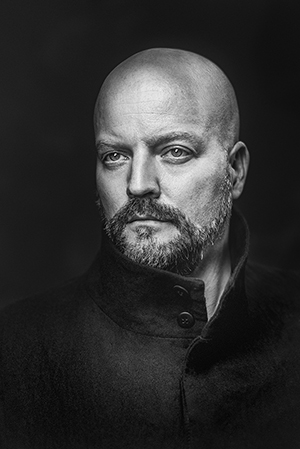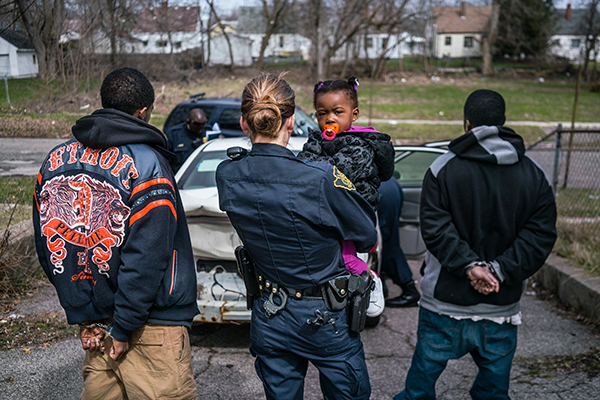World Press Photo exhibition lands in Brisbane
By Ellen Boonstra, Asia correspondent >>
THE HEARTBREAKING IMAGE of a two-year old Honduran girl crying near the US-Mexico border, while her mother is being searched and detained, made headlines around the world as the face of President Donald Trump's ‘zero tolerance’ immigration policy last year.
Taken by Getty photographer and Pulitzer Prize-winner John Moore, it won this year’s World Press Photo of the Year award. 
The image is part of the traveling World Press Photo 2019 exhibition which is making its way to Brisbane, where it will be on display at the Brisbane Powerhouse from July 13 to August 4.
Celebrating the best in photojournalism, the exhibition is a reflection of the most talked about news events of the past year, featuring over 150 single images and photo stories captured by professional photographers from across the globe.
The first World Press Photo award, back in 1955, came about when members of the Dutch photojournalists’ union had the idea of turning a national competition into an international one. What began as a one-off event has been held almost every year since, with the winning pictures put together in a traveling exhibition.
From these humble beginnings in The Netherlands with just a few hundred submissions, the event has flourished into what is widely regarded as the industry equivalent of the Oscars, with this year nearly 80,000 entries and 110 exhibitions in 45 countries, seen by over four million people.
The event earlier this year in Amsterdam where the winners were announced, was a weeklong festival with a dynamic program of master classes, presentations, screenings, meet-ups and panel discussions.
Business Acumen spoke with managing director Lars Boering at the organisation’s new premises at Amsterdam’s Westergasfabriek to get the bigger picture and find out how World Press Photo has evolved over the years.
“We are more than a contest,” he said, explaining how the World Press Photo Foundation plays an important role in bringing visual storytelling to places where media censorship is rife. 
Using the Press Freedom Index as a compass, they are guided to destinations where they feel they can make an impact. This year’s plans include “mission-driven” exhibitions to El Salvador, Caracas and Baghdad, among others.
“We highlight the importance of freedom of speech, freedom of exchange of information and free flow of information. Our dream is to touch every country of the world – whether it’s with the exhibition or an activity, or just by being there.”
WIDE OUTREACH
For two years in a row, the organisation has held exhibitions at the Yangon Photo Festival in Myanmar.
“In a country that’s not so open about press freedom, that’s something very special,” he said, adding that the organisation makes sure to maintain its neutrality. “We have one rule – we do not alter the content of the annual exhibition for political reasons.”
Also, in an era where large parts of the population have become immune to yet another news report showing poverty, misery and atrocities, the organisation feels a responsibility towards encouraging journalists to document more positive news stories – ones that focus on what’s actually working rather than on what’s gone wrong.
“If you have stories that are positioned to talk about great things, with emphatic things taking place, then that’s the most powerful antidote to negativity and fake news,” he surmised.
Case in point is the ‘Solutions Visual Journalism Initiative’, a groundbreaking project launched at World Press Photo this year, in collaboration with the New York Times.
Solutions or constructive journalism aims to change the frame of the story to address “the negativity bias” in the media, switching from a focus on problems to stories of those taking action. 
While this type of journalism has been growing in recent years, it has not yet been comprehensively or consciously adopted by documentary photographers, photojournalists and other visual journalists.
World Press Photo Foundation plans to commission, fund and publish a small number of such news stories in 2019-2020 in order to educate journalists and engage the public on the benefits of a solutions focus in visual journalism and the media’s “negativity bias.”
“Bad news is numbing for people,” Mr Boering said.
“My organisation has been involved with showing bad news for years; how great is it to make photographers aware that they can submit work that shows things that are moving in the right direction?” he says.
“The ‘Solutions’ type of project is definitely something that we will pursue more of in the future.”
SOCIAL ENTERPRISE
With a small, highly dedicated team of around 30 people at the Amsterdam headquarters and a large number of international volunteers in locations around the world, the organisation has managed to put together an impressive roster of photojournalism-related exhibitions, activities and initiatives.
World Press Photo Foundation is primarily funded by its own activities, accounting for about 60 percent of its revenue. There are corporate partnerships – in Holland PriceWaterhouseCoopers and Dutch Postcode Lottery are major sponsors this year, while the exhibitions in Sydney and Brisbane are supported by Canon Australia and Brisbane Airport Corporation, respectively.
The organisation also receives funding from private donors and family foundations, as well as support from embassies, museums and art institutions. Combined with revenue derived from renting out the exhibition worldwide and other activities like the sales of the World Press Photo yearbooks, Mr Boering estimated current annual turnover to be between 3.5 and 5 million euros.
“We are a non-profit social enterprise and aggregate as much money as we can to spend it on creating impact,” Mr Boering said.
The social impact is on multiple levels. Just by announcing the winners alone, the organisation has a potential global reach of 4.3 billion views through all the media coverage that is generated as a result of the exhibition and the organisation’s many other activities, “meaning all these people get touched by stories that matter".
At a time when journalism including photojournalism is under pressure, he said, “it is important to offer them [journalists and photographers] a platform because at the end of the day, they are preserving a piece of history as well as shaping the way news and photojournalism are reported.” 
World Press Photo Exhibition 2019
13 July 2019 to 4 August 2019
Brisbane Powerhouse, Brisbane
Free admission
www.brisbanepowerhouse.org/events/2019/07/12/world-press-photo-exhibition-2019
ends

 How to resolve AdBlock issue?
How to resolve AdBlock issue?